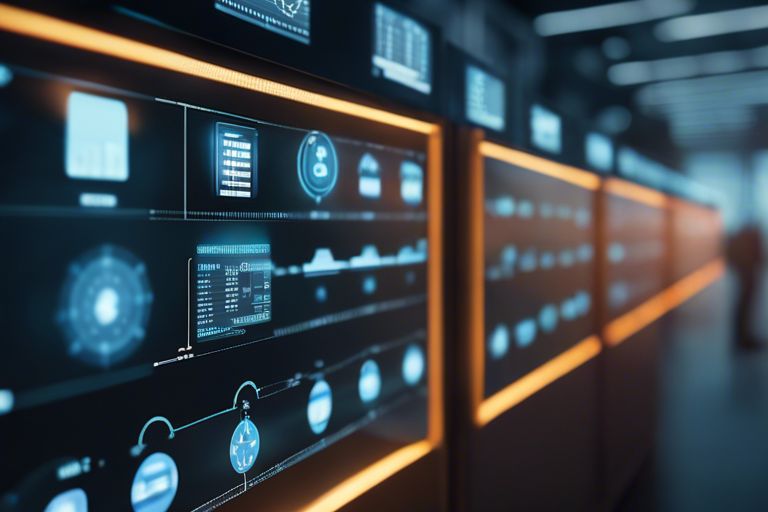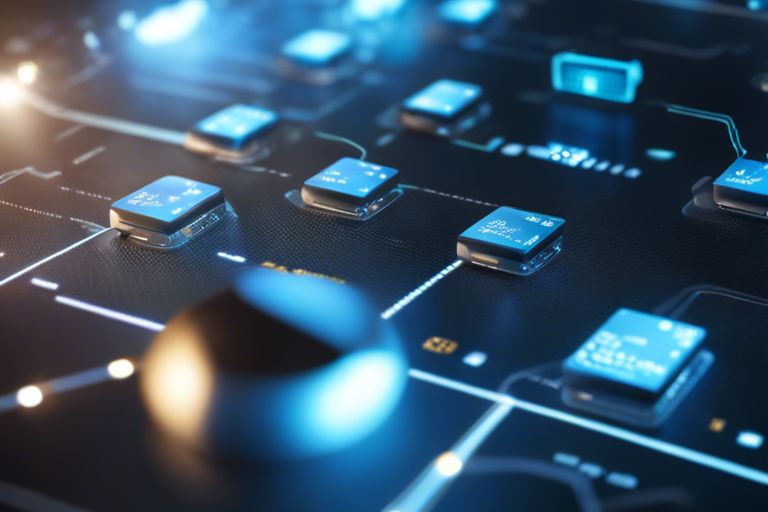Edge Computing 101 – A Step-by-Step Guide To Harnessing Real-Time AI In Emerging Technologies
Exploring the realm of edge computing is not just a trend but a necessity in today’s fast-paced digital landscape. In this comprehensive guide, we will delve into the intricacies of real-time AI and how it can revolutionize emerging technologies. Learn how to leverage the power of edge computing to boost efficiency, reduce latency, and enhance security in your systems. Stay tuned for a step-by-step journey that will equip you with the knowledge to navigate the complexities of real-time AI at the edge.
Understanding Edge Computing
Before delving into how edge computing can revolutionize real-time AI in emerging technologies, it is crucial to have a solid grasp of what edge computing entails. In simple terms, edge computing involves processing data closer to where it is created, rather than relying on a centralized data-processing warehouse. This approach minimizes latency and enhances efficiency in delivering real-time insights and actions, making it ideal for applications that require quick response times and low bandwidth usage.
Definition and Types of Edge Computing
Edge computing can be categorized into several types based on the location of the computing infrastructure. Fog computing is one such type that extends the capabilities of edge computing by providing a more hierarchical architecture. Another type is mobile edge computing, which leverages edge resources in cellular base stations or other edge devices to enable ultra-low latency applications. Cloudlet is a form of edge computing that provides a small-scale cloud infrastructure specifically designed for mobile computing devices.
| Edge Computing Type | Description |
| Fog Computing | Extends capabilities of edge computing |
| Mobile Edge Computing | Leverages edge resources in cellular base stations |
| Cloudlet | Provides small-scale cloud infrastructure for mobile devices |
The key advantage of edge computing lies in its ability to process data near the source, reducing the need for data to travel long distances to centralized servers. This results in lower latency and bandwidth savings, crucial for applications that demand real-time decision-making. The different types of edge computing enable organizations to choose the most suitable architecture based on their specific requirements.
Core Components and Architecture
Understanding the core components and architecture of edge computing is essential for implementing efficient solutions. It typically consists of three main components: edge devices, edge servers, and cloud services. Edge devices, such as sensors or IoT devices, collect and process data locally. Edge servers store and analyze this data, while cloud services handle more intensive tasks and provide additional storage capabilities.
It is crucial to design a robust architecture that ensures seamless communication between these components while prioritizing data security and privacy. Organizations must also consider factors such as scalability, reliability, and flexibility when designing an edge computing infrastructure to meet evolving business needs. Ultimately, a well-structured edge computing architecture can empower organizations to harness the full potential of real-time AI applications and drive innovation in their industry.

Deploying Real-Time AI on the Edge
Some of the most exciting advancements in technology are happening at the intersection of real-time AI and edge computing. Deploying real-time AI on the edge allows for faster processing, lower latency, and more efficient use of resources. This approach is crucial for applications in emerging technologies such as autonomous vehicles, industrial automation, and smart cities.
Factors to Consider for Integration
When integrating real-time AI on the edge, there are several key factors to consider to ensure successful deployment. Some of the main considerations include hardware constraints, power consumption, network bandwidth, and data privacy. Ensuring compatibility with existing systems and scalability for future growth are also essential. Any miscalculation in these factors can lead to suboptimal performance and compromised functionality.
- Hardware constraints: Ensure that the edge devices have enough processing power and memory to run real-time AI algorithms efficiently.
- Power consumption: Optimize algorithms to minimize power consumption and maximize battery life for edge devices.
- Network bandwidth: Consider the limitations of network bandwidth for transferring data between edge devices and the cloud.
- Data privacy: Implement robust security measures to protect sensitive data processed at the edge.
Step-by-Step Guide to Implementation
An effective deployment of real-time AI on the edge requires a systematic approach to integration. Breaking down the implementation into manageable steps can streamline the process and ensure optimal performance. Below is a step-by-step guide to implementing real-time AI on the edge:
Maximizing Edge Computing Performance
After understanding the basics of edge computing and its significance in enabling real-time AI, it’s crucial to focus on maximizing its performance for optimal results. By following best practices and implementing strategies to enhance efficiency, organizations can fully leverage the power of edge computing for their AI applications.
Tips for Optimizing Real-Time AI Workloads
Any organization looking to enhance their real-time AI workloads on the edge should consider the following tips:
- Utilize edge-native AI models to reduce latency.
- Implement data compression techniques to optimize data transfer.
- Employ edge caching mechanisms for faster retrieval of frequently used data.
- Use hardware acceleration for computationally intensive AI tasks.
Assume that incorporating these strategies will help in achieving higher performance levels for real-time AI workloads on the edge.
Pros and Cons of Edge Computing for AI Applications
Cons:
| Pros | Cons |
| Low latency for real-time AI processing | Increased complexity in managing distributed systems |
| Reduced bandwidth usage for data transmission | Potential security vulnerabilities at the edge |
Maximizing the efficiency of edge computing for AI applications requires a careful balance of its benefits and challenges. By addressing the drawbacks and leveraging the advantages effectively, organizations can harness the full potential of edge computing for their AI initiatives.
Navigating Challenges and Solutions
Security Considerations in Edge Computing
The implementation of real-time AI in edge computing brings about concerns regarding security. Securing sensitive data at the edge is crucial to prevent unauthorized access and potential breaches. Encryption, access control, and authentication mechanisms are essential to safeguard data transmission and storage in edge devices.
Regular security audits and updates are vital to address vulnerabilities and ensure the integrity of the system. Implementing security best practices and staying informed about the latest threats can help mitigate risks and enhance the overall security posture of edge computing systems.
Strategies for Scalability and Maintenance
Maintenance in edge computing involves ensuring the smooth operation of edge devices and scalability of the system as data volume and processing requirements grow. Automating routine maintenance tasks and deploying remote monitoring tools can help streamline operations and reduce downtime.
Scalability strategies include load balancing, resource optimization, and efficient data management to support the growing demands of real-time AI applications at the edge. Regular performance assessments and capacity planning are essential to sustain scalability and ensure optimal system performance.
Challenges may arise in managing the diverse network of edge devices and addressing interoperability issues between different hardware and software components. However, by proactively addressing these challenges and implementing robust maintenance and scalability strategies, organizations can harness the full potential of edge computing for real-time AI applications.
Conclusion
Conclusively, understanding the fundamentals of edge computing is essential for harnessing real-time AI in emerging technologies. By following the step-by-step guide provided here, you can effectively apply edge computing in your projects to optimize performance, reduce latency, and enhance the overall user experience. As technology continues to evolve, mastering the concepts and applications of edge computing will be instrumental in staying ahead in the fast-paced world of AI-driven innovations.
FAQ
Q: What is Edge Computing?
A: Edge Computing is a distributed computing paradigm that brings computation and data storage closer to the location where it is needed, improving response times and saving bandwidth.
Q: How does Edge Computing differ from Cloud Computing?
A: While Cloud Computing centralizes data processing and storage in large data centers, Edge Computing processes data locally on a device or a local server, reducing latency and enhancing real-time processing.
Q: What are the benefits of Edge Computing?
A: Edge Computing offers lower latency, improved data privacy and security, bandwidth optimization, offline operation, and enhanced reliability compared to traditional cloud-based solutions.
Q: What are some real-world applications of Edge Computing?
A: Edge Computing is widely used in autonomous vehicles, industrial automation, smart cities, healthcare monitoring, retail analytics, and IoT devices to enable real-time decision-making and autonomous operations.
Q: How can businesses harness real-time AI through Edge Computing?
A: By deploying AI algorithms at the Edge, businesses can process data locally without relying on cloud services, enabling faster insights, enhanced security, and improved operational efficiency in emerging technologies.
![]()













